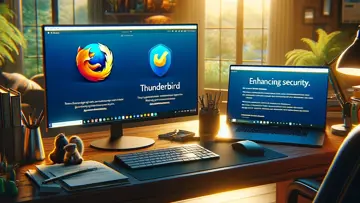Overview of Python Mesh Viewer
Python Mesh Viewer, developed by Thomas Capricelli, is an open-source software application designed for visualizing and manipulating 3D mesh data. It serves as an invaluable tool for engineers, architects, game developers, and 3D artists who require a reliable solution to interact with mesh files in various ways. The application supports several popular file formats, making it versatile for a wide range of users.
Features
Python Mesh Viewer includes a plethora of features aimed at enhancing the user experience while working with 3D meshes. The primary features are detailed below:
- File Format Support: Supports common formats such as OBJ, STL, PLY, and FBX, enabling users to load a variety of mesh types.
- User-Friendly Interface: The interface is intuitive and simplifies processes such as loading files, navigating through meshes, and executing tasks efficiently.
- Interactive Navigation: Users can interactively rotate, zoom, and pan the view of the mesh using simple mouse controls.
- Shader Support: Includes various shader options for different rendering styles, providing flexibility in how meshes are visualized.
- Customizable Display Options: Users can toggle wireframe mode, solid views, or point clouds to understand mesh structure better.
- Measurement Tools: Built-in tools allow for precise measurements between points or along edges within the mesh.
User Experience
The user experience of Python Mesh Viewer is one of its strong suits. The interface is designed to be approachable for users with minimal technical skills while still offering advanced functionalities appreciated by professionals. Key aspects of the user experience include:
- Simplicity: The application does not overwhelm users with unnecessary complexity. Instead, it presents essential functions straightforwardly.
- Responsiveness: The viewer responds promptly to user inputs, ensuring a smooth navigation experience whether working with small or large meshes.
- Tooltips and Documentation: Python Mesh Viewer provides helpful tooltips and has online documentation that assists users in navigating through features without confusion.
Installation and System Requirements
The installation process of Python Mesh Viewer is relatively straightforward. Users can download the application from its official repository or website. Below are the general system requirements needed to run this software:
- Operating System: Compatible with Windows, macOS, and Linux platforms.
- Processor: A modern dual-core processor or higher is recommended for optimal performance.
- RAM: At least 4GB of RAM (8GB recommended for complex meshes).
- Graphics Card: A dedicated GPU supporting OpenGL is preferable for enhanced performance.
Performance
The performance of Python Mesh Viewer has been noted to be efficient when dealing with comprehensive mesh files. Thanks to its implementation using Python and appropriate libraries, the application effectively manages memory usage while rendering complex models. Users have reported that even extensive files load quickly and can be manipulated without significant lag.
Community and Support
The development of Python Mesh Viewer benefits from a strong open-source community. Users can actively participate in forums or contribute to ongoing development efforts via platforms like GitHub. Here are aspects regarding community and support:
- Active Development: Frequent updates are pushed to enhance functionality and fix bugs reported by users.
- User Forums: Active forums allow users to discuss problems they encounter or suggest new features directly with developers and fellow users.
- Tutorials and Resources: Numerous tutorials are available online that cater to both beginners and advanced users seeking to maximize the utility of the software.
Use Cases
The flexibility of Python Mesh Viewer makes it suitable for various use cases across different industries. For example:
- Aerospace Engineering: Engineers can visualize mesh geometry from aerodynamic simulations effectively.
- Developers utilize it to inspect models before integrating them into game engines.
-
- Anatomical Research: Medical professionals may employ this software for visualizing complex anatomical structures derived from scans.
Tổng quan
Python Mesh Viewer là một Mã nguồn mở phần mềm trong danh mục Phát triển được phát triển bởi Thomas Capricelli.
Phiên bản mới nhất của Python Mesh Viewer hiện thời không rõ. Vào lúc đầu, nó đã được thêm vào cơ sở dữ liệu của chúng tôi trên 16/10/2009.
Python Mesh Viewer đã chạy trên hệ điều hành sau: Windows.
Python Mesh Viewer Vẫn chưa được đánh giá xếp hạng bởi người sử dụng của chúng tôi
Đánh giá mới nhất
|
|
Kaspersky Password Manager
Bảo mật mật khẩu của bạn với Kaspersky Password Manager! |
|
|
Wondershare Filmora
Chuyển đổi video của bạn thành kiệt tác điện ảnh với Wondershare Filmora! |
|
|
AOMEI Partition Assistant Standard Edition
AOMEI Partition Assistant Standard Edition: Công cụ quản lý phân vùng đĩa hiệu quả |
|
|
Foxit PDF Reader
Xem PDF hiệu quả với Foxit Reader |
|
|
Ashampoo WinOptimizer
Tăng hiệu suất máy tính của bạn với Ashampoo WinOptimizer |
|
|
WinZip
Tổ chức và nén các tập tin của bạn một cách dễ dàng với WinZip! |
|
|
UpdateStar Premium Edition
Giữ cho phần mềm của bạn được cập nhật chưa bao giờ dễ dàng hơn với UpdateStar Premium Edition! |
|
|
Microsoft Edge
Một tiêu chuẩn mới trong duyệt web |
|
|
Google Chrome
Trình duyệt web nhanh và linh hoạt |
|
|
Microsoft Visual C++ 2015 Redistributable Package
Tăng hiệu suất hệ thống của bạn với Microsoft Visual C++ 2015 Redistributable Package! |
|
|
Microsoft Visual C++ 2010 Redistributable
Thành phần cần thiết để chạy các ứng dụng Visual C++ |
|
|
Microsoft OneDrive
Hợp lý hóa việc quản lý tệp của bạn với Microsoft OneDrive |





